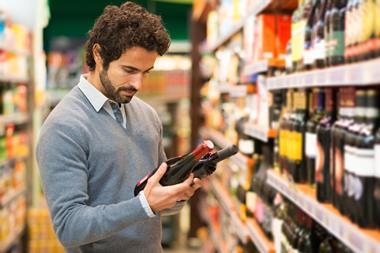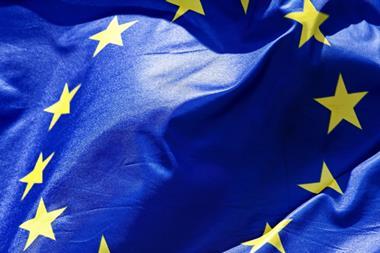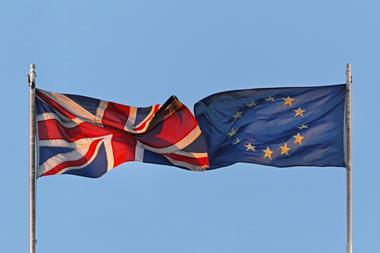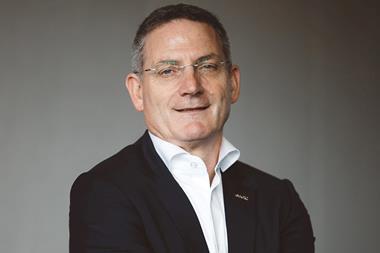
European Bioplastics is the association representing the interests of the bioplastics industry along the entire value chain in Europe. Its members produce, refine, and distribute plastics that are either bio-based, biodegradable, or both. Managing director Hasso von Pogrell talks to Tim Sykes about the state of the industry and EUBP’s expectations from interpack.
Tim Sykes:
European Bioplastics was a memorable presence at interpack 2013. How has the situation for bioplastics in packaging developed in the last three years? How has the market grown and how has its attitude changed?
Hasso von Pogrell:
A lot has changed in the past few years. The bioplastics industry has flourished and developed into a fast growing and innovative sector. Bioplastics saw a steep increase in interest and awareness on the potentials of bio-based materials to deliver better social, economic, and environmental outcomes for our society by replacing fossil resources with renewable, bio-based feedstock. Accordingly, the market for bioplastics is predicted to grow by 50 per cent over the coming years from around 4.2 million tonnes in 2016 to approximately 6.1 million tonnes in 2021. Bioplastics are not merely a buzzword and niche product any longer but have become a viable, innovative and sustainable alternative to the status quo.
Packaging remains the largest field of application for bioplastics with almost 40 per cent (1.6 million tonnes) of the total bioplastics market in 2016. Major brands and manufacturers are responding to the rising consumer demands for more sustainable products and packaging by switching from fossil-based to bio-based materials or offering biodegradable solutions. Many packaging applications, including bottles, wrappers, pouches and bags, are already being made from bio-based materials that are easily recyclable, such as bio-based PE, bio-based PET or PLA. Compostability is an added feature of some bioplastics materials that is increasingly sought when it comes to packaging of food or perishables. Flexible packaging such as films and trays are particularly suitable for fresh produce such as fruit and vegetables as they enable longer shelf life and can be discarded together with the food and organically recycled in industrial composting plants.
TS:
Have there been significant shifts in terms of the affordability of bioplastics, through economies of scale or other supply chain developments?
HVP:
Today, there is a bioplastic alternative to almost every conventional plastic material and corresponding application. While offering the same qualities and functionalities as conventional plastics, bioplastics moreover provide innovative solutions with improved properties and performances as well as the unique ability to reduce emissions and our dependency on fossil resources. As more companies and brands are switching to bio-based plastics, and as production capacities are rising, supply chains and processes are becoming more efficient, and prices have come down significantly. Even though the currently low oil prices are making it difficult for bioplastics to achieve competitive pricing levels compared to conventional plastics at present, we are confident that this trend will continue given the positive signals from Brussels to support the bio-based economy in Europe.
TS:
How would you characterise the regulatory climate today? Does the EU’s Circular Economy policy represent an opportunity for the industry?
HVP:
The EU has started to acknowledge the many benefits of bio-based materials and just recently took a major step towards paving the way for bioplastics. In March, the European Parliament plenary voted for amendments of the waste legislation that will encourage Member States to support the use of bio-based materials for the production of packaging and to improve market conditions for such products. In addition, the MEPs voted for a definition of recycling that includes organic recycling. A mandatory separate collection of bio-waste will be ensured across Europe, facilitated by certified collection tools such as compostable bio-waste bags. These developments are a clear signal that Europe is committed to making the circular economy a reality and presents an important opportunity for the bioplastics industry across Europe, which has invested greatly in the development of innovative materials over the past decades. We expect this decision to contribute to the increased demand for bioplastic solutions in packaging and many other sectors.
TS:
What do you hope to achieve from interpack 2017?
HVP:
At this year’s interpack, European Bioplastics will highlight the latest innovations and advancements of the bioplastics industry and will inform visitors about the many benefits of bio-based and biodegradable plastic materials. Our booth will be a hub for all visitors interested in bioplastics and assist them in finding the right company amongst the over 30 bioplastics representatives at the trade show.
TS:
What do you hope visitors to the fair will learn about bioplastics in packaging?
HVP:
European Bioplastics will offer two on-site seminars during interpack to inform visitors to the fair about bioplastics, to provide a comprehensive overview over the most important bio-based and biodegradable materials and corresponding applications, and to look more closely into specific fields of interests, including standardisation and communication. The seminars are designed for professionals from the plastics industry and related fields and will provide substantial, in-depth information to equip the participants with the essential theoretical knowledge and practical tools to work with bioplastics. A seminar ‘Bioplastics – An Introduction’ will be held on 4 May, 14:00-17:30 and will give newcomers to the topic of bioplastics a succinct and comprehensive overview over the fundamental basics. A second seminar ‘A Guide to Communication on Bioplastics’ will be held on 8 May, 10:30-13:30, and will cover the essentials of sound and effective communication of the properties of bio-based and biodegradable plastics. More information on the seminars is available on our website.
TS:
Without favouring particular member companies, are there any areas of innovation or product development that are particularly exciting in bioplastics at the moment?
HVP:
There are many innovations and very promising developments in the field of new materials as well as improved properties. PHA (polyhydroxalkanoates), for example, is a new polymer family that has been in development for a while and has now finally entered the market at commercial scale. As more and more companies are getting involved in the production of PHA products, the prices for PHA dropped, and sales volumes went up. PHA polyesters are 100 per cent bio-based and feature a wide array of physical and mechanical properties, including improved barrier properties suitable for food packaging. PHA is biodegradable and compostable in industrial composting plants but also in other environments such as marine waters. Another new exciting material is PEF (polyethylene furanoate), a new polymer that is expected to enter the market in 2020. PEF is a next-generation polyester that is comparable to PET but that also features 100 percent bio-based content, superior barrier and thermal properties, making it ideal material for the packaging of soft drinks, water, alcoholic beverages, fruit juices, food and non-food products. Currently, PEF is still at the development stage, but with more players getting involved, the future for this new material is looking very optimistic.
TS:
What are the most important challenges for the industry at the moment?
HVP:
The main challenges faced by the bioplastics industry are not of technical nature but the lack of effective policy measures or regulatory incentives to encourage a full-scale market entry. While the European Commission has given priority to assessing how to reduce the plastics industry’s dependency on fossil resources in its recent Roadmap for a Strategy on Plastics, effective instruments are still missing. Replacing a significant proportion of the conventional fossil feedstock with plant-based or waste-based alternatives would not only contribute greatly to the reduction of greenhouse gas emissions but also make sure we use our resources more efficiently. Both market push and pull measures could drive this transition, as would a level-playing-field regarding access to bio-based feedstock in the EU. Even though a lot still needs to be done, the initiated policy shifts and amendments are important opportunities for the bioplastics industry in Europe.
European Bioplastics can be visited at interpack in hall 9, stand F07.









